Are you tired of seeing “green” every gardening season?
I know I am, and that’s why I’m adding some “purple power” to my crops this year.
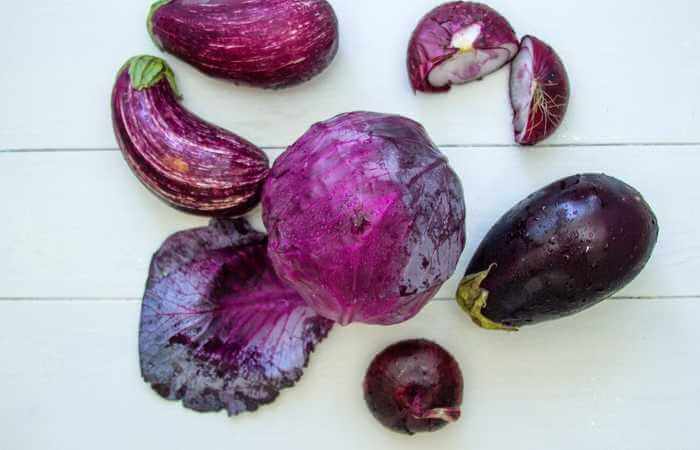
With so many colorful choices that will enhance my gardening experience and expand my cooking skills, I am sure to be testing out many of these purple vegetables in the list below!
1. Purple Eggplant
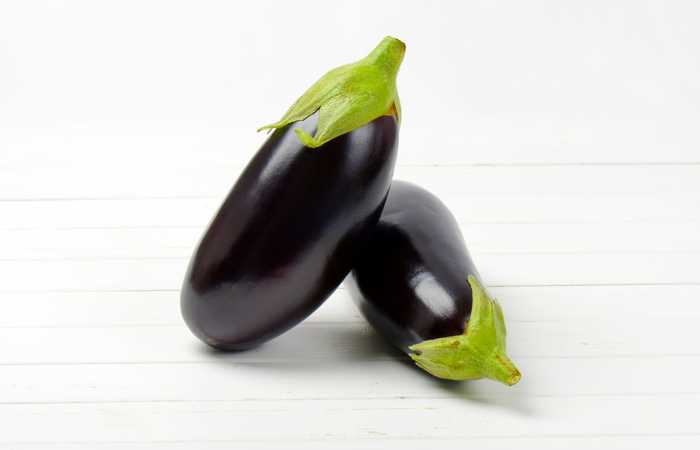
Purple eggplant is the most obvious of the purple veggies for gardening. The long purple vegetable is a member of the nightshade family and has a dense outer skin, with internal flesh a creamy white with spots of purple.
You can eat eggplant straight from the garden, where you can expect a soft texture and a slightly bitter but otherwise mild taste. Once you cook eggplant, it takes on a deeper flavor that is still mild but a bit nutty. The texture also changes to become almost creamy.
Growing tips: It takes around 100-120 to go from seed to harvest, so start seeds indoors around two months before the last frost to get a jumpstart on your crop.
Transplant seedlings outdoors when soil temperatures stay above 60°F in an area with six to eight hours of full sun daily. Eggplant thrives in nutrient-rich, slightly acidic, well-draining soil.
2. Purple Splendor Potatoes
Purple Splendor potatoes produce their vibrant color in both their skin and flesh, which adds a delightful burst of color to otherwise bland looking dishes. The potato is small, with a mildly sweet, nutty flavor.
The variety is waxy, which is less starchy than standard potatoes, so the plump flesh retains more moisture and tastes more creamy. The skin is firm, which makes this potato great for boiling.
Growing tips: Plant purple potatoes in early spring or fall as they are a cool-season crop. Plant six inches deep and 12-15 inches apart. Cover the seed potatoes with about four inches of soil and cover the plants with soil as they grow until flower buds form.
3. Purple Passion Spinach

If you are searching for the perfect purple leafy vegetables to add to your garden, Purple Passion spinach is easy to grow. It delivers a rich, delicious flavor to salads and other dishes.
The plant grows very tall, sometimes reaching five feet or more, with stunning purple or deep burgundy leaves. Snip the smaller, more tender leaves throughout the season to add color to all your meals or chop up more mature leaves and cook them as “greens” or add to soups or stews.
Growing tips: This variety of spinach is very hardy, making it easier to grow than others. Plant in early spring or autumn when the soil is cool. Keep the soil moist and protect it from excessive sunlight, as long summer days will cause the plant to bolt.
4. Cosmic Purple Carrots
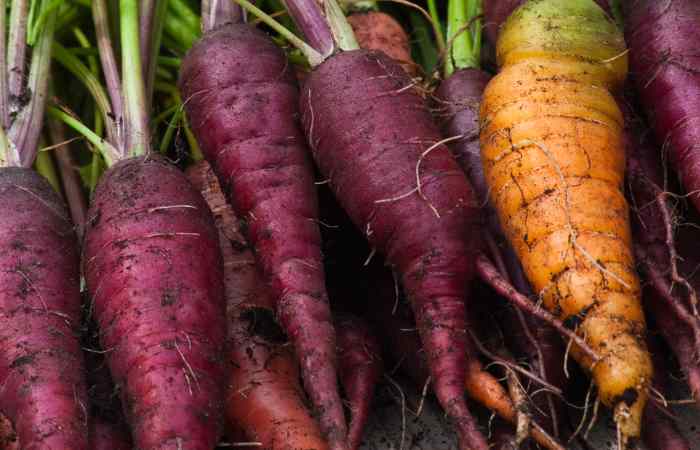
A little lesser-known member of the purple veggies club is Cosmic Purple carrots, which not only brings exciting color to your vegetable trays but is also very sweet and crunchy with just the slightest peppery hint.
Use the carrots raw, or cook for soups or side dishes. The carrot’s interior flesh is mostly orange like a standard carrot, but some may retain a more purple tone.
Growing tips: Cosmic Purple carrots need about 70 days to mature. All carrots grow best in mild temperatures, so plant in spring or fall. Hot soil damages the flavor of carrots, so shade the garden plot if temperatures rise unexpectedly fast before harvest time.
5. Sicilian Violet Cauliflower
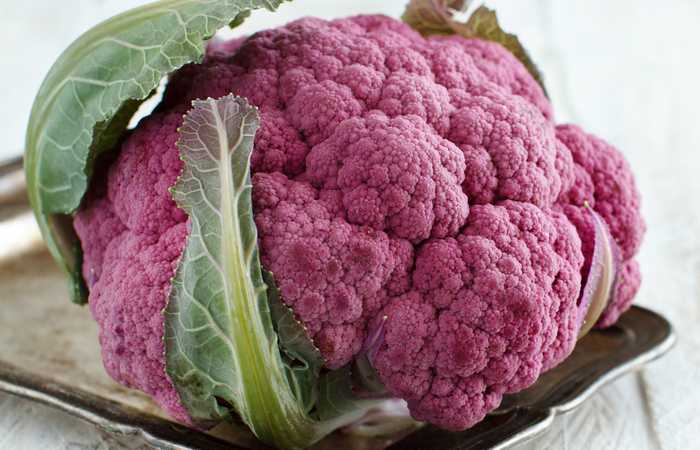
Sicilian Violet cauliflower is a cruciferous veggie that achieves the purple color from anthocyanins that form naturally within the plant.
The taste of this purple cauliflower raw is similar to white cauliflower, but the flavor becomes much sweeter and nuttier when cooked. The flesh color changes to light green during the cooking process, but this variety also produces a much creamier texture.
Growing tips: A short growing season of 60-85 days allows you to start seeds indoors about six weeks before the last frost and be enjoying delicious cauliflower by the end of spring. Space plants 24-inches apart to allow room for healthy growth.
6. Azur Star Kohlrabi
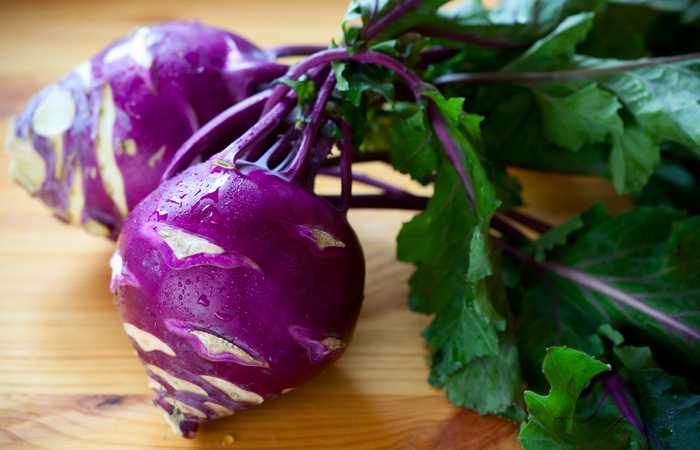
Azur Star kohlrabi is a delightful vegetable with both edible leaves and bulbous stem. The flavor is mild, but the texture, when raw, adds crunch to dishes.
Kohlrabi is one of the easier vegetables to grow and harvest, making it an excellent choice for beginners who want to add color to their garden. When cooked (try them roasted!), they take on a sweeter flavor with a texture much like broccoli stems.
Growing tips: Kohlrabi prefers cooler growing weather but plenty of sun. Plant in fertile soil that retains moisture well, as this plant is thirsty.
7. Cherokee Purple Tomatoes
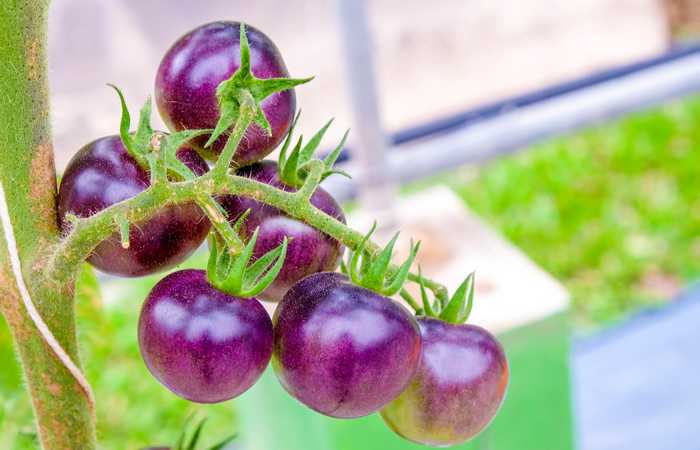
Cherokee Purple tomatoes add a rich deep reddish-purple color on both skin and flesh to dishes. The tomato imparts a wonderful flavor that is sweet, smoky, and slightly tart.
The Cherokee Purple is an heirloom variety that grows large, with a thick skin that holds up well to slicing, which makes it perfect for adding to sandwiches or salads.
Growing tips: This variety of tomato grows well in most climates that can provide 12-16 weeks of warm weather. The plant prefers nutrient-heavy soil that drains well and does best when foliage remains dry, so water at the base.
8. Cylindra Purple Beets

The cylindrical shape is what gives the Cylindra Purple beets their name. The elongated shape makes this beet much easier to clean and slice and is a favorite for pickling or canning.
Cylindra beets have a sweeter flavor than round beets, and the texture of the flesh is more delicate. The edible beet tops are also sweeter and work well in salads or as cooked greens.
Growing tips: One seed of this vegetable will typically germinate into two or three plants, so thin them out once they become seedlings so they don’t get crowded and stunt the beet’s natural growth or shape.
9. Redbor Purple Kale
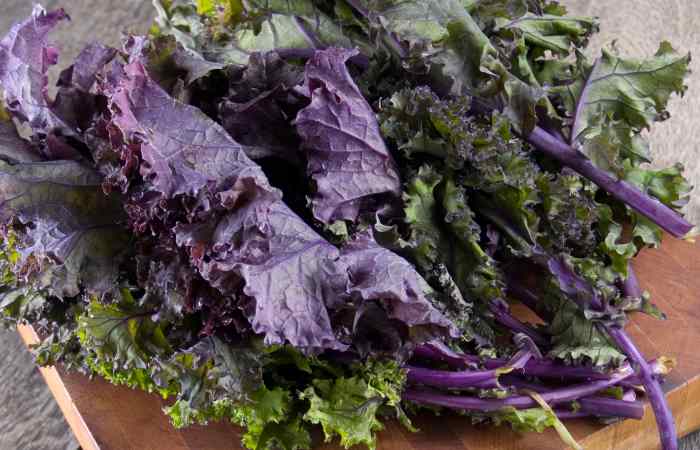
The tightly frilled purple leaves make Redbor kale a garden standout. Once it hits your table, the kale has a mild flavor similar to cabbage.
The color stays robust while raw, but will dull to a pink tone when cooked. The texture is also very crisp while raw, but softens during cooking. Cooking also enhances the flavor, bringing out a nuttier and more sweet note.
Growing tips: Redbor kale can grow in warmer climates, but the purple color is much deeper, and the flavor sweeter when grown during cold weather. The vegetable thrives in soil rich with compost that drains well. You can harvest kale every 45-50 days, so you can stagger your plantings to extend your harvest.
10. Purple King Pole Beans
For a long summer of bean harvest, opt for the Purple King pole beans that grow long, thin pods in a deep purple color that brings interest to your garden and is easy to spot for picking.
The beans are very juicy and sweet, with a bright flavor that enhances every dish, whether you serve it raw or cooked. The inner flesh is green, and the color of the exterior of the bean also fades to deep green during cooking.
Growing tips: Once temps reach 65°F, sow seeds in well-draining soil in a sunny location. Beans do best under hot, dry conditions. Pull small pods for a crisp, tasty snack or allow the plants to mature for cooking as a side dish. Remove old pods and store the dried beans inside for winter soups.
Expanding your regular gardening crop varieties with purple vegetable names is not only fun but increases the range of the flavors, textures, and colors you bring to your favorite recipes.
Purple vegetables bring new life to a mundane garden, so give a few varieties a try this next growing season; they won’t disappoint!










